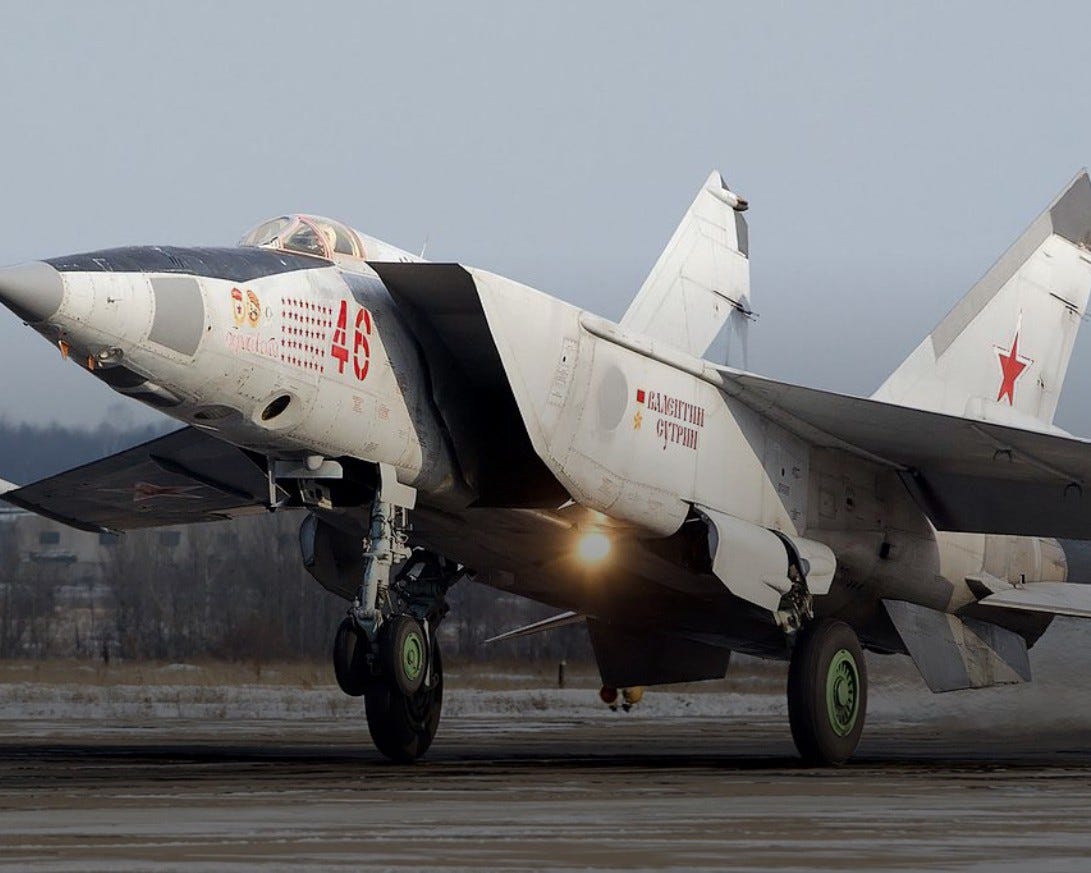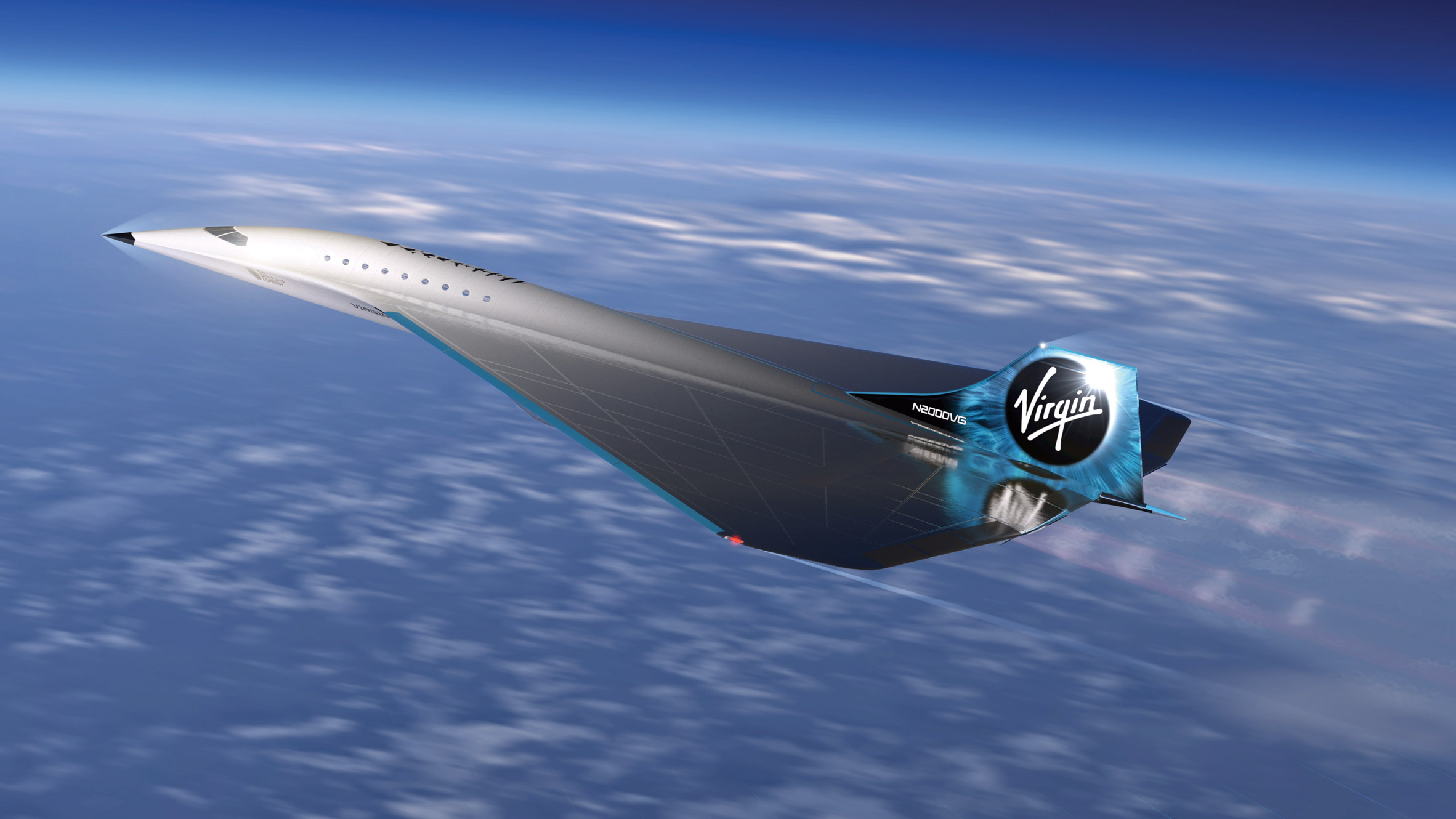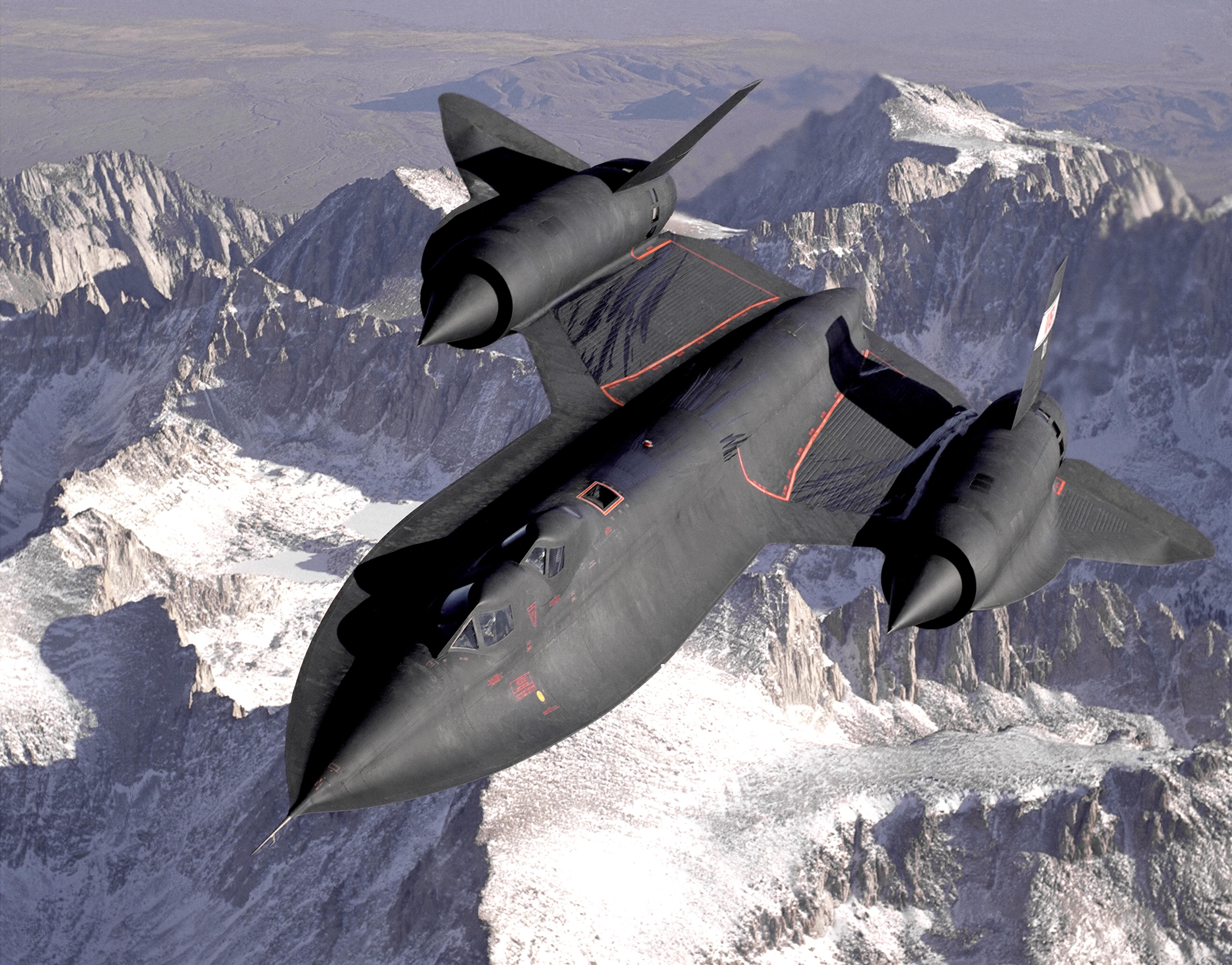Mach 3 Jet - Aerospace brand Virgin Galactic has unveiled a concept for a high-speed passenger jet called the Mach 3 that can travel at three times the speed of sound.
The Mach 3 aircraft will be able to carry nine to 19 passengers and fly at altitudes in excess of 60,000 feet (18,300 meters).
Mach 3 Jet

Equipped with triangular triangular wings, the aircraft could travel at a speed of Mach 3, or 3704 kilometers per hour, which is three times the speed of sound.
General Dynamics Rf 4x
By comparison, the Concorde, a supersonic commercial airliner that was in service until 2003 and also had a delta wing, had a cruise speed of only Mach 2.
Virgin Galactic unveiled the design concept after receiving approval from the US Federal Aviation Administration's Center for New Concepts and Innovation to develop a certification system for a new generation of supersonic passenger travel.
“This marks an exciting step forward in developing a new generation of Virgin Galactic high-speed aircraft in partnership with industry and government leaders with a focus on customer experience and environmental sustainability,” the brand said in a statement.
"The aircraft's design philosophy aims to make high-speed travel practical, sustainable, safe and reliable, with user experience being the highest priority," the brand said in a statement.
Impressive Video Shows Usaf Museum Xb 70 Valkyrie Mach 3 Bomber Being Pushed Outside For Gallery Redesign Last October
"The aircraft will take off and land like any other passenger aircraft and is expected to integrate into existing airport infrastructure and international airspace around the world."
Virgin Galactic partnered with aeronautical engineer Rolls-Royce to develop the Mach 3 propulsion system.
“We are excited to partner with the Rolls-Royce Engineering Group innovation team as we strive to develop environmentally friendly advanced aircraft propulsion systems, and we are excited to work with the Federal Aviation Administration to ensure that our developments can be put into practice. influence from the very beginning,” said George Whitesides, Chief Space Officer of Virgin Galactic.

“We have made a lot of progress so far and look forward to unlocking new frontiers in high-speed travel,” Whitesides added.
Republic Xf 103 Thunderwarrior Mach 3 Superiority Fighter Project 1/72 Scale
The Virgin Galactic team will now move on to the next design phase, which includes finalizing the aircraft's architecture and selecting the materials to be used in its design and manufacture.
While Virgin Galactic is best known for its developments in space travel, it also manufactures advanced air vehicles.
The company recently unveiled the interior design of its SpaceshipTwo, which is supposed to take six passengers on a suborbital flight into space to see Earth and experience a few minutes of weightlessness.
The cockpit design was created in collaboration with London-based studio Seymourpowell to provide "distraction-free safety" while also maximizing the view of Earth from space. According to one estimate, the Russian Air Force is armed with 252 MiG-31s. Moscow began upgrading its Foxhound fleet to the MiG-31BM and BSM variant starting in 2010 and plans to upgrade 100 aircraft by 2020. detection range increased to 200 miles. It has also been upgraded to use the latest generation of long-range air-to-air missiles, including the R-33S, R-77 - the Russian equivalent of the American AIM-120 - and the ultra-long range R. -37 - designed to be a killer of tankers and AWACS. The new Foxhounds can also carry up to 18,000 pounds of air-to-ground smart bombs and anti-radar missiles in case Moscow needs more attack aircraft. Finally, the BM has new data links integrating MiG-31 sensors with ground-based radars and friendly fighters, allowing Foxhound to coordinate the entire air defense system. A flight of four upgraded Foxhounds can patrol airspace over 400 miles in diameter.
Sr 71 Blackbird Spy Plane: Why Only America Built This Mach 3 Monster
During the last decade of the Cold War, the MiG-31, nicknamed "Foxhound" by NATO, enjoyed a certain mystique in the West. The same grainy aerial photographs of the fast fighter appeared in aviation publications, along with grim speculation about its capabilities. But unlike its peers - the MiG-29 and Su-27 - the Foxhound never emerged from oblivion after the end of the Cold War.
The reason is simple - the MiG-31 was developed as an air defense interceptor, it was not exported and was not used in combat. But Moscow has hundreds of fighter jets in its arsenal as part of its multilayered air defense network and will continue to do so for years to come.
The Foxhound was born as an attempt to improve upon the somewhat disappointing predecessor of the MiG-25 Foxbat. The twin-engined Foxbat remains the fastest flying combat fighter, capable of speeds above Mach 3 and flying at altitudes of up to 70,000 feet to take on the US XB-70 Valkyrie supersonic bomber, which was not in production. The Foxbat enjoyed a heightened reputation in Western aviation circles until Soviet defector Viktor Belenko flew to Japan in 1976, allowing the Pentagon to discover what the Soviets had long known: for all its speed, the Foxbat was a small dog when it came to maneuverability. and could not maintain supersonic speed at low altitude. Additionally, he can only reach Mach 3 by burning his engines beyond their thermal tolerance.

After the defection, the MiG-25 began to be sold for export, while the Soviet Union focused on building a better high-speed interceptor than the Foxbat hull. Moscow was more concerned not only with high-altitude high-speed bombers, but also with low-altitude cruise missiles that were punching holes in its radar protection. New design elements include a weapons systems officer in the back seat to operate a powerful new radar, improved long-range air-to-air missiles, and improved engines.
The Return Of The Supersonic Jet Is Coming Sooner Than Expected
Designated the MiG-31, this highly advanced Foxbat supercar is equipped with a weapons systems officer (WSO) rear seat to operate its large Zaslon S-800 Passive Electron Scanning Array (PESA) radar. The heavy radar had a maximum range of 125 miles and included the ability to "look down, shoot down" to detect and target low-flying aircraft, which was not common at the time. An infrared search and track (IRST) system further complemented the sensory suit.
Central to Foxhound's armament was the new R-33 long-range missiles, code-named AA-9 Amos by NATO. The R-33s are considered the Soviet equivalent of the AIM-54 Phoenix missiles used on the US Navy's F-14 fighters. miles. The Foxhound radar made it possible to simultaneously fire on four aircraft. Four to six additional medium or short range air-to-air missiles can be mounted under the wings. Unlike the Foxbat, the Foxhound is also armed with a 23mm cannon.
The MiG-31 retains the high-altitude performance of the Foxbat, although it is slightly slower at Mach 2.83 - still faster than any modern Western fighter. More importantly, it can fly Mach 1.23 at low altitude, which the MiG-25 cannot. This makes it ideal for hunting cruise missiles and fighter-bombers.
However, the Foxhound is not very maneuverable and cannot safely pull more than 5G when flying at supersonic. The MiG-31 would not be able to cope with modern F-15 fighters in air combat, but it is simply not designed for this. The Foxhound is designed to approach intruders at high speed, launch missiles, and disengage from combat.
Exterior View Of The Soviet Mach 3+ Reconnaissance And Interceptor Aircraft Mig 25 \
Foxhound production began in 1979 and entered service in 1981. Inspired by vague but brilliant intelligence reports of its capabilities, Foxhound gained a sinister reputation in NATO intelligence reports. Reflecting this exaggerated reputation, the 1982 film
, starring Clint Eastwood, suggested that the MiG-31 was capable of flying at Mach 5, taking advantage of stealth technology and being controlled by thought alone!
They appear to have been used to harass SR-71 Blackbird reconnaissance aircraft, which can maintain Mach 3.3 or higher on their reconnaissance missions. According to one Soviet pilot, the Foxhound was able to "hit" the Blackbird with its missiles. Another report claimed that six MiG-31s managed to plant the Blackbird in a separate incident. However, the Blackbird was never used to fly over Soviet airspace, contrary to what some sources suggest. Instead, Blackbirds flew alongside him, which explains why MiG-31 pilots never had a reason to fire R-33 missiles at fast reconnaissance aircraft.

Moscow has perfected its Foxhounds over time, starting with the production of 101 aerial refueling MiG-31DZs in 1989. The CIA later developed 69 MiG-31Bs and BSs with new radars and various hardware improvements. Two MiG-31Ds were also developed to launch specialized anti-satellite missiles.
Virgin Galactic Reveals High Speed Mach 3 Aircraft Design
An export version of the MiG-31E was also conceived, but it was never sold abroad - the Foxhound was too specialized and expensive to appeal to foreign buyers. The only Foxhounds in service outside of Russia are thirty to fifty, inherited from the collapse of the Soviet Union by the Kazakh Air Force.
In 2015, there were rumors that Syria bought the MiG-31 from Moscow. They did not materialize, probably fortunately for the Syrian government, which would not find much use for a highly effective air-to-air platform in a brutal civil war. The Syrian fleet of MiG-25 interceptors has already shown itself to be very ill adapted to the conflict, reduced to firing air-to-air missiles at ground targets with predictable results.
AT
Sig p365 tulster holster, sig p365 iwb holster, sig holsters p365, sig p365 sas holster, sig p365 xl holster, sig p365 hybrid holster, appendix holster sig p365, safariland holster sig p365, sig p365 belt holster, sig p365 holster, sig p365 purse holster, sig sauer p365 holster


0 Comments